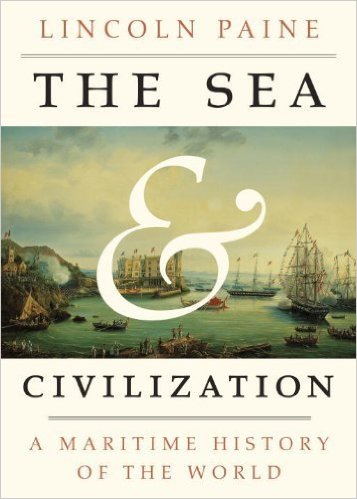
The Sea and Civilization: A Maritime History of the World
Tom Verde
Lincoln Paine
2013, Alfred A. Knopf, 978-1-40004-409-2, $40 hb.
As proud as we are of our terrestrial accomplishments, there is no ignoring the fact that 71 percent of the globe is ocean. Looking through the lens of maritime history on civilization as it emerged, developed and continues to be sustained is Lincoln Paine’s objective in this nearly 800-page volume which opens with this challenging salvo: “I want to change the way you see the world.” Looking in to land, as opposed to out to sea, Paine devotes a fair amount of his study to the watery highways of the Muslim world and its many trading ports, from medieval China to the modern Persian Gulf. The lateen sail, Christian-Muslim maritime relations in the Mediterranean, Berber (as in “Barbary”) pirates, the role of the sea in the spread of Islam itself, and more are addressed in this scholarly yet readable account of how crucial maritime travel, trade and exploration have been to human history.
You may also be interested in...

Nomadic Chieftain’s Biography Unveils Dynamics of Colonial Expansion
Historian Tetsu Akiyama challenges the narrative that the Kyrgyz were a “static and monotonous ‘traditional’ society’” destined to be subsumed.
In the Aftermath of Rome's Collapse, These Communities Shaped the Mediterranean
Three regions of the post-Roman Mediterranean, from 400 CE to 1000 CE—the Latin West, Byzantium and the early Islamic world—are the focus of this work.
Omani Author Zahran Alqasmi's Story About Life, Land and Honey
In his third novel, about a beekeeper living in Oman’s mountainous interior, local author Zahran Alqasmi grapples with a changing landscape around him.